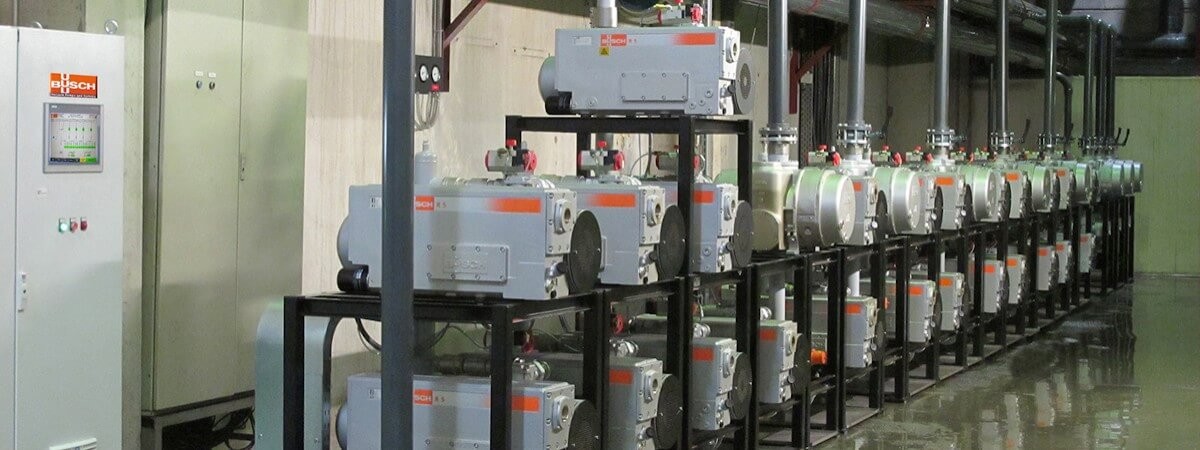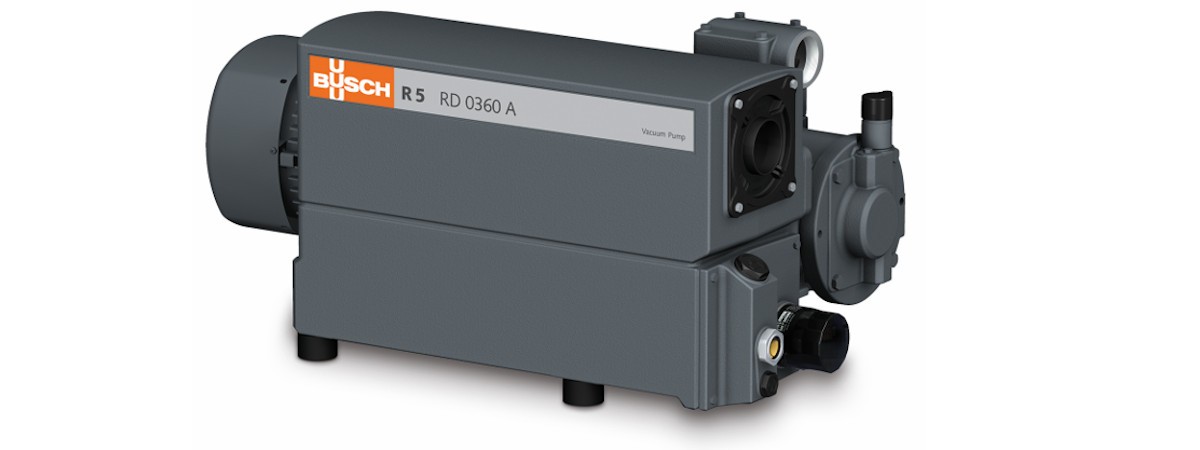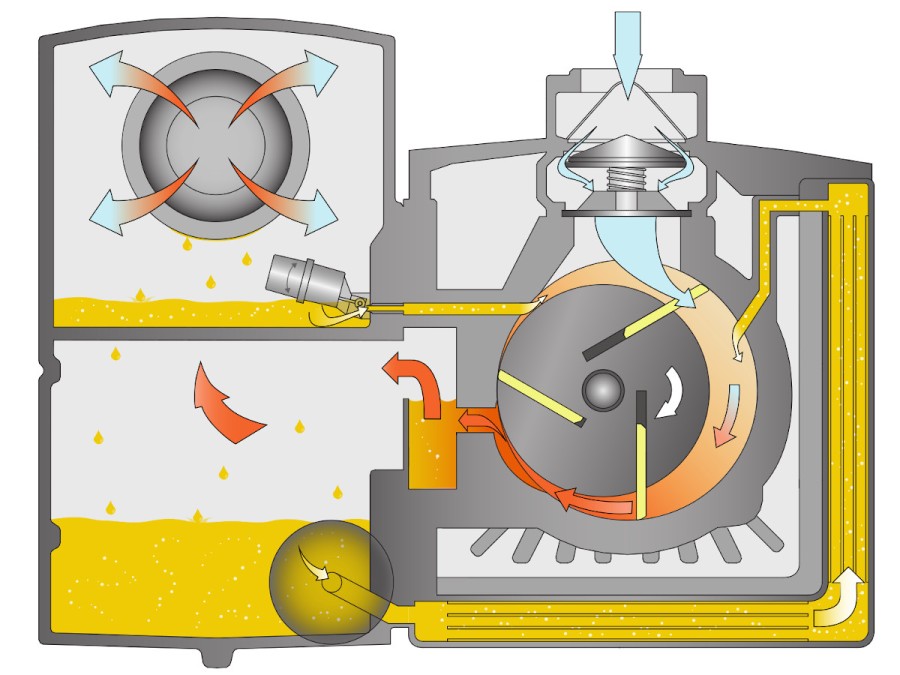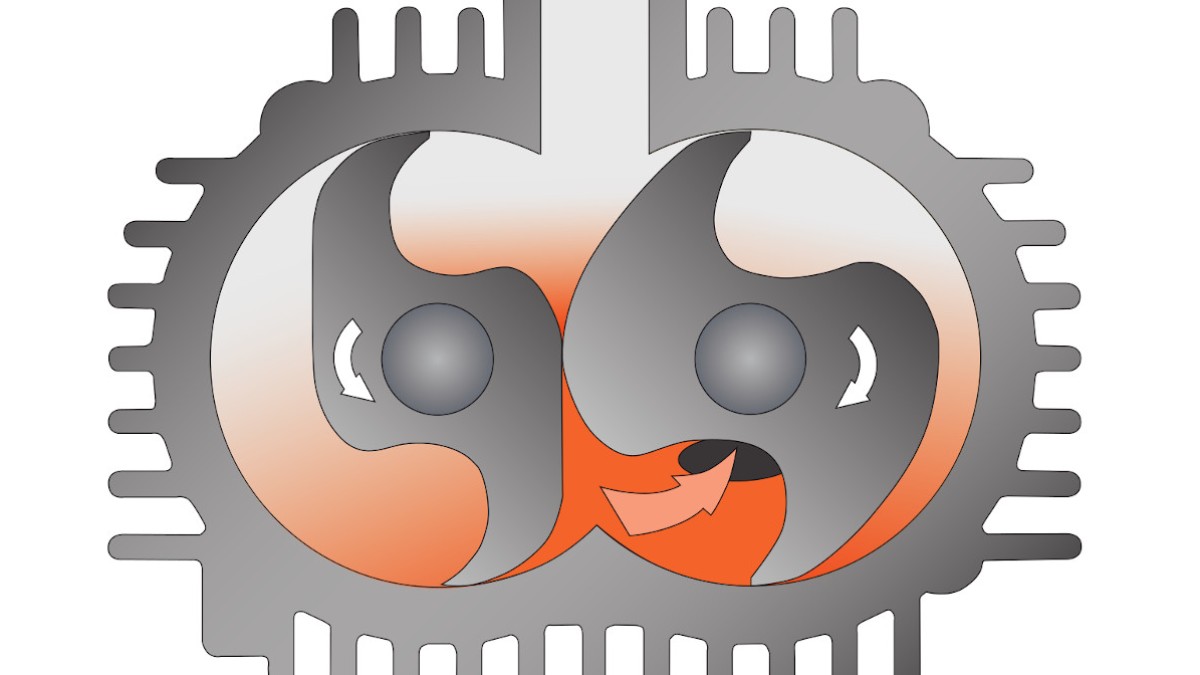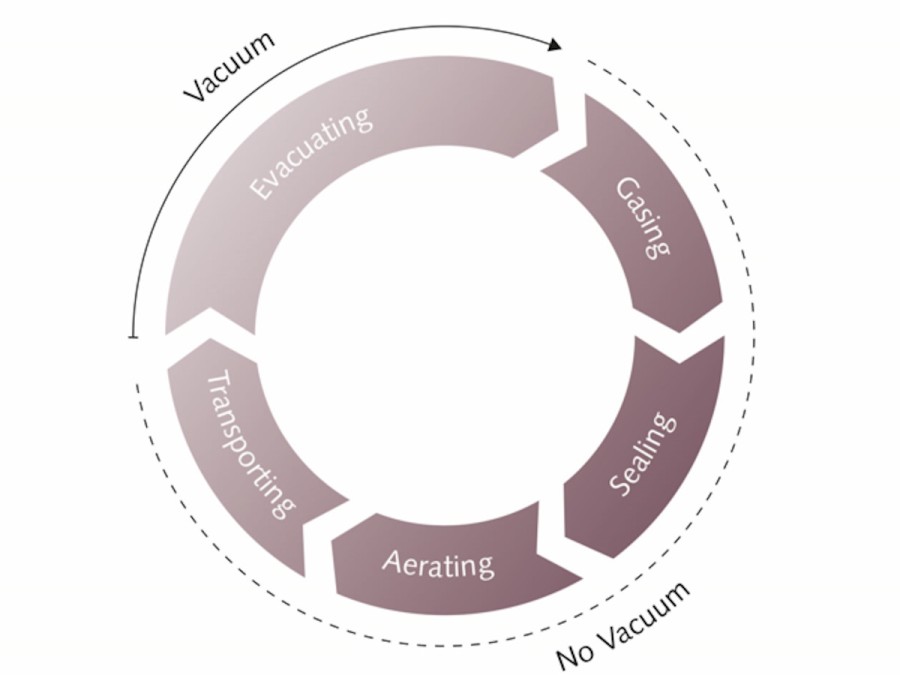Cost-Effective Vacuum Technology in Food Packaging: Part 2
Energy saving potential in vacuum supply
Maulburg, Germany
|
07.07.2021
|
9 min
Vacuum packaging was introduced more than 50 years ago and has been in continuous development ever since. Today, vacuum or modified atmosphere packaging is the most common method of packaging food products hygienically, in appropriate portions and attractively for the consumer.
Vacuum reduces the activity of microorganisms requiring oxygen.
Under vacuum, food products remain non-perishable for longer, even without preservatives. It pays to take a close look at the vacuum supply in operation, to ensure that the packaging is as energy saving and cost-efficient as possible.
While the
first part of our article dealt with the basics of vacuum generation, today we will discuss other parameters that may have an impact on operating costs. These parameters include:
- Vacuum technology selection
- Installation site
- Cycle times and packaging cycles
- Control of packaging process
- Heat emission / heat recovery
- Centralized vacuum supply
These three types of packaging machines are the main ones used in the food industry:
- Chamber packaging machines
- Tray sealing packaging machines
- Thermoforming packaging machines
In all types of packaging machines, the vacuum pumps evacuate the packing chambers to the desired vacuum level, which in the case of fresh meat, for example, is between 2 and 10 mbar. Modified atmosphere packaging is usually only evacuated to a vacuum level of 100 to 300 mbar. With thermoforming packaging machines, there is the additional task of generating the vacuum for forming the bottom film.
A vacuum level between 100 and 250 mbar is sufficient for this purpose, too.
Vacuum pumps
The vacuum generators that are by far the most frequently used are
oil-lubricated rotary vane vacuum pumps (Fig. 2). They are state-of-the-art in this application, thanks to continuous further development and optimization, and are distinguished by their robustness and reliability. An internal oil circuit provides for high operational reliability, high vacuum levels (0.1 mbar = 99.99 percent), high water vapour tolerance and a self-cleaning effect (Fig. 3). These advantages are counterbalanced by the need for regular servicing and a limited speed control range.
Dry screw vacuum pumps were originally developed for applications, for example in the semiconductor industry, that require low ultimate pressures as well as a operating fluid-free compression. They have the advantage of lower servicing costs and the option of speed control (frequency control). Due to minimal clearance and the lack of a protective oil film, screw vacuum pumps are less robust in terms of product or liquid entry. This is why screw vacuum pumps are only occasionally used for vacuum packaging. There are also screw vacuum pumps whose screw profile is based on the simple design of a compressor. They are not optimized for generating vacuum and do not reach the ultimate pressure required for packaging. This disadvantage can be compensated for by integrated oil circulation lubrication and operation at very high speeds. In this case, however, the major advantages of a screw vacuum pump – minimal servicing and oil-free compression – no longer apply. Operation at high speed can also have a negative impact on the pump life. Similarly to the screw vacuum pump, the
claw vacuum pump (Fig. 4) is dry and does not require any operating fluids. However, in the relevant sizes, it only achieves an ultimate pressure of 100 to 150 mbar. This means that it is not suitable for the entire vacuum packaging process, but rather only for packaging in a modified atmosphere and for forming the bottom film in thermoforming machines. In these applications, claw vacuum pumps operate nearly maintenance-free and are extremely energy-efficient.
The oil-lubricated rotary vane vacuum pump is therefore still the recommended vacuum generator for vacuum packaging in most cases.
Installation site
Smaller packaging machines have rotary vane vacuum pumps integrated inside. When it comes to larger packaging machines, the vacuum pumps can also be installed outside of the packaging machine and connected to the machine via pipes or hoses. In principle, the distance between the vacuum pump and the packaging machine or packaging chamber plays an important role in terms of efficiency. This is because the vacuum pump not only has to evacuate the packaging chamber, but also the pipe from the chamber to the vacuum pump. The longer the pipe, the longer the evacuation process takes. However, pipes with smaller diameters generate higher flow losses, which in turn increases the evacuation time. In practice, it is not uncommon to come across incorrectly designed piping and losses of more than 50 percent in terms of pumping speed. These losses are often compensated for by using a larger vacuum pump. On the one hand, this is only possible to a limited extent for physical reasons. On the other hand, excessive energy consumption is inevitable with a pseudo-solution like this. Cycle times and packaging cycles
Attempts are generally made to achieve the shortest possible cycle times and therefore quick packaging cycles. The evacuation time makes up about 30 percent of the packaging cycles of thermoforming machines and about 80 percent in double chamber machines (Fig. 5). It could be deduced that the vacuum pump is unnecessarily in operation during 20 to 70 percent of the cycle and that this shows that there is potential for saving energy by only switching the vacuum pump on and off for the evacuation of the packaging chamber.
This process does not make any sense in terms of energy because the vacuum pump consumes the greatest amount of electricity during the start-up phase. In addition, an engine that is switched on and off several times per minute will overheat and fail very quickly. Frequency control is also not a sensible option. It responds too slowly and the energy consumption in the phase between idle mode and full capacity is higher than when the vacuum pump is running at a constant speed.
Frequency control can only be efficient for relatively long packaging cycles. Furthermore, operating the vacuum pump permanently and synchronously has another advantage: Even if the vacuum pump is not evacuating during the packaging cycle, it still maintains the vacuum in the pipe right up to the valve in front of the vacuum chamber. This means that the vacuum does not have to be completely built up again each time the valve is opened. This helps to minimize the evacuation time. The vacuum pump consumes excessive amounts of electricity during the start-up phase. This is also the case if the motor of the vacuum pump is operated outside of its speed optimum, such as with frequency control.
Control of packaging process
The control unit for the packaging machine should also be responsible for the vacuum pump, making it possible to optimally coordinate them. This way you can, for example, avoid the vacuum pump remaining in operation even when nothing is being packaged. The control unit is usually supplied by the manufacturer of the packaging machine. If different packaging sizes are used in one machine, the cycle times may vary considerably. In order to work in the most energy-efficient way possible, the control system should record the packaging pressure and thus control the packaging process. This control system even responds to different product loads.
Heat emission / heat recovery
Motor and vacuum pump generate heat during operation and release it into the environment. These heat emissions put a strain on the interior climate. In air-conditioned rooms, the heat energy emitted by the vacuum pumps has to be compensated for by means of an air-conditioning system. The waste heat therefore requires additional energy for cooling. On the other hand, the waste heat can also be prevented by using a heat exchanger. Another option is to also use the waste heat from the vacuum pumps for heating purposes. It is, for example, possible to use an oil-water heat exchanger to recover a large part of the waste heat as heat energy. An oil-water heat exchanger can be used to recover and use 50 to 70 percent of the motor's energy consumption as heat energy. The rule of thumb for the balance of waste heat and cooling requirements is: one kilowatt of additional cooling energy is required for three kilowatts of waste heat from the vacuum pump.
Centralized vacuum supply
Operations involving a larger number of packaging machines have a correspondingly large vacuum requirement. If an operation exceeds a certain level, centralizing the vacuum supply can be the most efficient option. The possible energy savings have then to be weighed against the investment costs. Designed precisely for the respective application by vacuum specialists,
central vacuum systems (Fig. 1) can offer many advantages:
Overall cost-effectiveness
Not every packaging machine requires a separate vacuum pump. Depending on the system design, the number of vacuum pumps can be significantly reduced, as well as the costs for purchasing, energy consumption and servicing. Existing vacuum pumps can be integrated (see example at the end of this section).
Energy savings generated by a demand-driven control system
The unavoidable strong fluctuation in the vacuum requirement of individual machines is levelled out. The total output can be permanently regulated close to or in the range of the efficiency optimum. This means that considerable energy savings are possible - sometimes of more than 50 percent.
Heat recovery / cooling requirements
Since the systems are installed in a separate room, no waste heat is transferred to air-conditioned production or packaging areas. There is no need for additional cooling in order to compensate for the waste heat in air-conditioned areas. At the same time, the waste heat can be used comprehensively and efficiently. Both effects have a considerable influence on the energy and CO2 balance of the overall operation.
Operational reliability
When a vacuum pump is being serviced, another vacuum pump is automatically switched on in the central vacuum system. This prevents downtime, loss of performance and productivity.
Short cycle times, high performance level
The piping system between the central vacuum generation unit and the packaging machines is used as a vacuum buffer. It is also possible to install additional buffer tanks in the vacuum chamber without any problems. This means that the desired vacuum volume in the packing chamber is immediately available at any time. This guarantees the fastest possible evacuation of the packaging and results in maximum possible cycle performance.
Easy maintenance
As the central vacuum system is installed outside of the production or packaging area, it can be serviced during operation. While one vacuum pump is being serviced, the others continue to operate - so there is no downtime. The service staff does not need to enter the hygienically sensitive areas.
Fully automatic operation
Continuous process monitoring is possible thanks to the demand-driven control system and the connection with the process control system. Defined target values are automatically adhered to.
Summary
In order to optimize the efficiency of vacuum generation, numerous factors and the characteristics of vacuum technology have to be taken into account. Combinations of vacuum pumps or the centralization of the vacuum supply often represent the best solution for providing the required vacuum in the process cycle with the lowest energy consumption. Given that vacuum pumps inevitably also generate heat, the aspects of additional cooling requirements and heat recovery play an important role when considering efficiency.
It is therefore absolutely necessary to look at the entire process and adapt the vacuum technology to the specific process in order to implement the most efficient vacuum generation possible. Unfortunately, there is not a universal solution for every individual process.
Maulburg, Germany
|
07.07.2021
|
9 min
